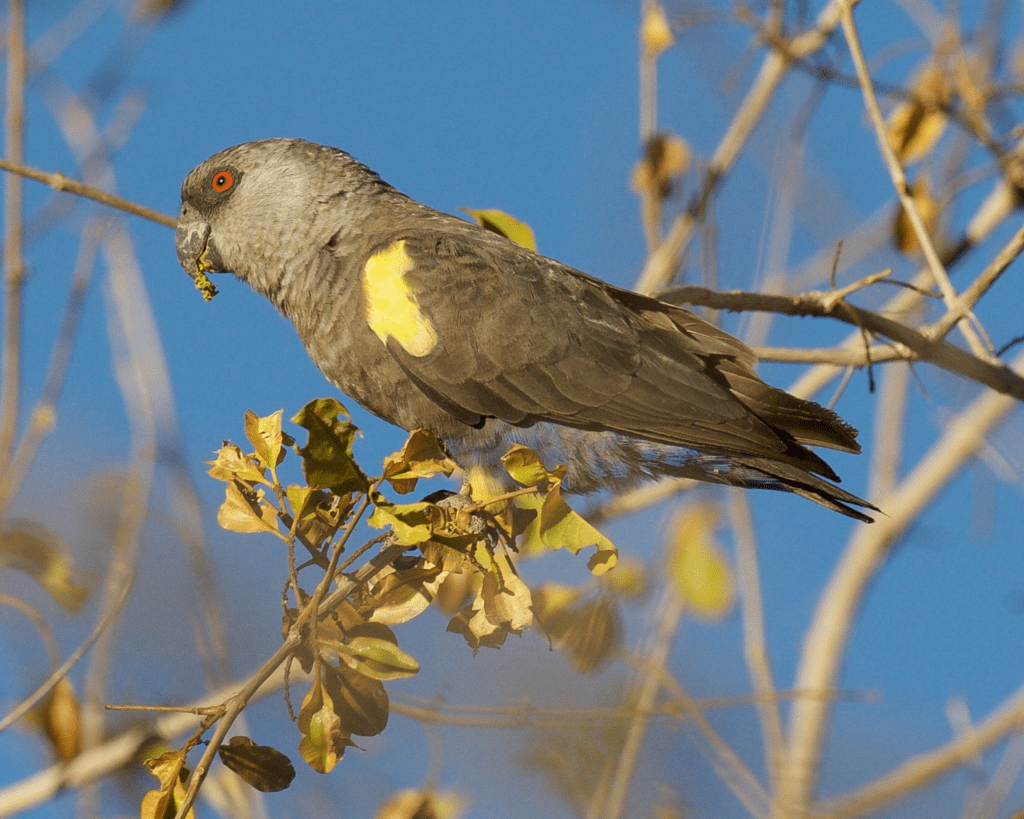Rüppell’s Parrot (Poicephalus rueppelli) populations are in decline due to unsustainable levels of trade.
In 1996, the Canadian World Parrot Trust supported a researcher from the University of Natal investigating Rüppell’s Parrot in Namibia. A study of dietary and nesting requirements in N Namibia was done in 1996 and 1997 and in the 2000s. The Namibian Red Data book Near-threatened classification highlights the species’ conservation status in Namibia and the need for further attention from conservation bodies. In 2012, the second Southern African Bird Atlas Project was begun to provide current information on distribution, range and population changes through comparisons with the first Atlas of Southern African birds.
Status: IUCN Least Concern / CITES Appendix II
Population: Decreasing; population unknown but reported as fairly common in suitable habitat. An estimated 9000 birds remain in Namibia.
Threats: Not globally threatened. At risk from heavy trapping for the wild bird trade, habitat loss and a restricted range.
Range: N Namibia and S Angola.
Natural history: Rüppell’s Parrots are found in woodlands along dried riverbeds, dry woodlands, dry steppe and thornveld, areas with tall trees, up to 1250 m (4100 ft). Birds eat various parts of plants – buds, shoots, nectar, flowers, seeds, pods, fruit; also melon and insect larvae. They generally stay near water in small flocks of up to 20 birds and are seen in greater numbers where food is plentiful. Breeding may be more linked to rainfall than season.

